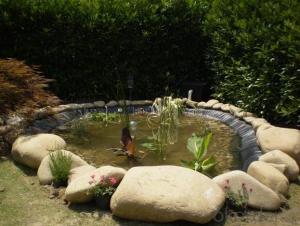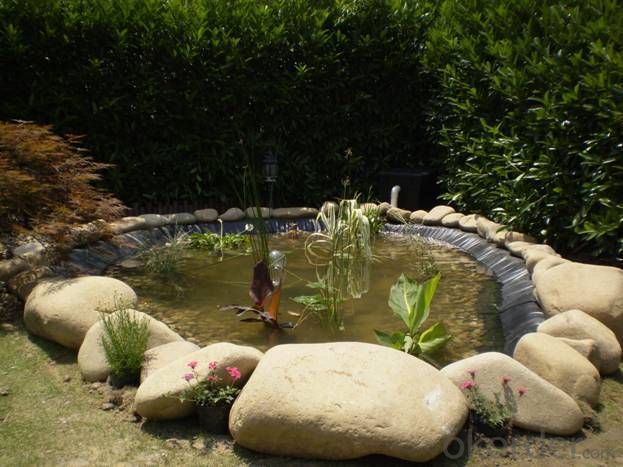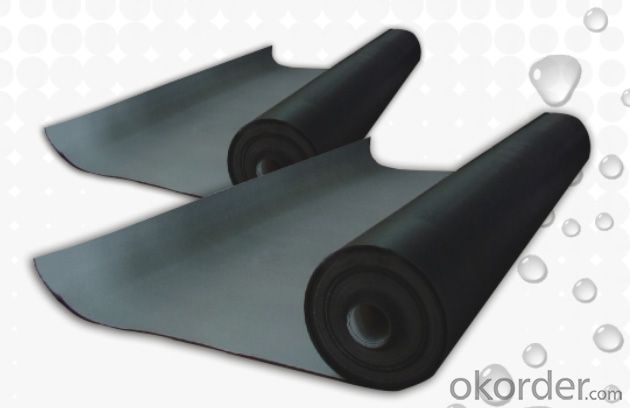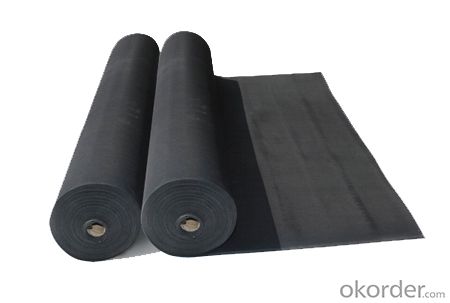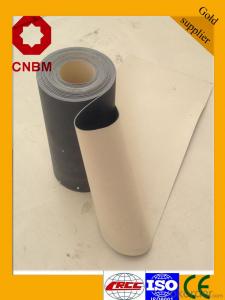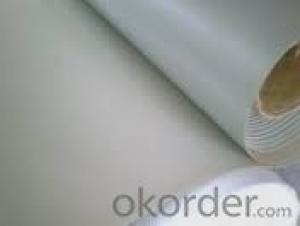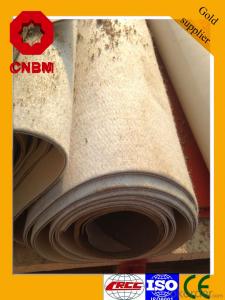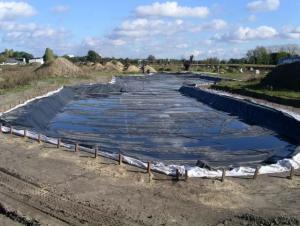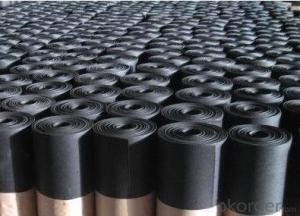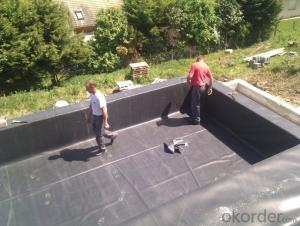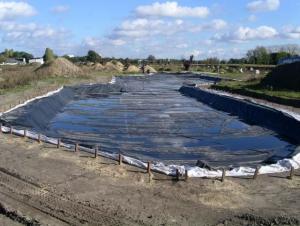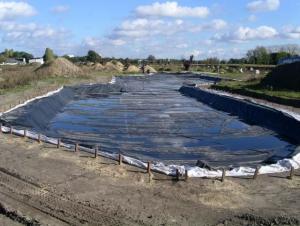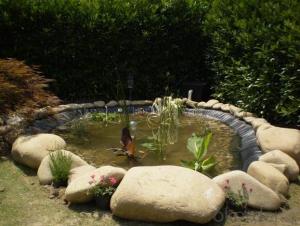EPDM Rubber Coiled Waterproof Membrane for Small Pond
- Loading Port:
- Shanghai
- Payment Terms:
- TT OR LC
- Min Order Qty:
- 50000 m²
- Supply Capability:
- 5000000 m²/month
OKorder Service Pledge
OKorder Financial Service
You Might Also Like
EPDM Rubber Coiled Waterproof Membrane for Small Pond
Description Of EPDM Rubber Coiled Waterproof Membrane for Small Pond:
•EPDM waterproof sheet has excellent anti-ozone-aging performance, able to resist ultraviolet light and corrosion of many chemical corrosive materials in the atmosphere
•It has high tensile strength, high ductility and strong retractility, it has excellent crack resistance, able to effect waterproof function even with tiny vibration of buildings.
• Excellent resistance to ozone, oxidation and sunlight.
• Resistance to chemicals; resistant to most inorganic products.
Main Features of EPDM Rubber Coiled Waterproof Membrane for Small Pond:
1>Excellent antiaging performance, service life up to 50 years
2>Working well with in 40C to 100C,it canbe constructed with a single layer in ambient temperature.
3>Waterproofing on various kinds of underground project,industrial of civil buildings and structures.
4>high extension rate, high tensile strength, small size changes at heat treatment
5>Good plant roots penetrability resistance and can be made waterproofing layer of planting roof
6>Special modified molecular structure ,effectively resolving the current domestic and foreign glue joint problem.
7>Good low temperature flexibility, and good performance of adapting to ambient temperature changes.
8>Convenient application ,solid joint, no environment pollution
9>chemical corrosion Resistance, can be used for special occasions
10>Convenient maitenance, low cost.
Specifications of EPDM Rubber Coiled Waterproof Membrane for Small Pond:
| Material | EPDM Rubber |
| Size | 1.2m (width)*20m (length) or customized, weldable type 2.05m or 4m width |
| Thick | 1.2mm, 1.5mm, 2.0mm |
| Type | Vulcanized & Weldable |
| Pattern | Non-reinforced (homogeneous) |
| Certificate | ISO9001/14001 |
Applications of EPDM Rubber Coiled Waterproof Membrane for Small Pond:
Widely used in roofs, basement, toilet ,swimming pool, and all kinds of industry and civil building waterproofing, reservoir, vivicism, bridge, underground, tunnel and dam waterproofing ,especially to the keystone waterproofing projects which is durability, high corrosion resistance and easy deformation.



IMages of EPDM Rubber Coiled Waterproof Membrane for Small Pond:




FAQ of EPDM Rubber Coiled Waterproof Membrane for Small Pond:
1. What are we supplying?
We are specialized in producing Colorful Asphalt Roof Shingle, SBS/APP modified bitumen waterproof membrane, Self adhesive bitumen waterproof membrane, PVC waterproofing membrane, EPDM rubber roofing membrane, Single Component Polyurethane Waterproof Coating, and Spray Polyurea Waterproof Coating
.
2. How Many years experience do we have?
We have been exported to more than 20 countries in the past 15 years.
3. How long do we usually reply your request?
We always reply our customer within 24 hours.
- Q: What is the meaning of the node and the additional layer in the construction of the membrane waterproofing layer?
- Waterproof membrane construction, the node is relative to the large area of the plane in terms of. Node parts are: yin and yang angle, the root of the pipeline, the rain shed, all kinds of flooding, expansion joints, deformation joints, construction joints, through the wall and other areas need to focus on processing.
- Q: Can a waterproofing membrane be used in areas with extreme weather conditions?
- Yes, a waterproofing membrane can be used in areas with extreme weather conditions. Waterproofing membranes are designed to withstand various weather conditions, including extreme heat, cold, rain, and UV exposure. They provide a protective barrier against water infiltration and can be specifically engineered to perform well in challenging climates. However, it is important to choose a high-quality membrane that is suitable for the specific weather conditions of the area.
- Q: Can a waterproofing membrane be used on concrete?
- Yes, a waterproofing membrane can be used on concrete. It is a common practice to use waterproofing membranes to protect concrete structures from water damage and moisture penetration. These membranes provide a barrier that prevents water from seeping into the concrete, thereby increasing its durability and lifespan.
- Q: Can a waterproofing membrane be used in planter boxes or raised beds?
- Yes, a waterproofing membrane can be used in planter boxes or raised beds to prevent water leakage and protect the surrounding structures. A waterproofing membrane is typically made of materials such as rubber, PVC, or polyethylene, which create a barrier between the soil and the surrounding area. This barrier helps retain moisture within the planter box or raised bed, preventing water from seeping into the ground and potentially causing damage to the foundation or nearby structures. Additionally, a waterproofing membrane can also prevent the leaching of chemicals or fertilizers from the soil, improving the overall quality of the planting environment. Nevertheless, it is important to ensure proper drainage in planter boxes or raised beds to prevent waterlogging and root rot.
- Q: Can a waterproofing membrane be used in kitchens?
- Yes, a waterproofing membrane can be used in kitchens. Waterproofing membranes are commonly used in areas prone to moisture, such as bathrooms and kitchens, to prevent water damage and leakage. They can be applied to various surfaces, including floors and walls, to create a waterproof barrier and protect against water infiltration. By using a waterproofing membrane in kitchens, one can ensure the longevity and durability of the space while preventing potential water-related issues.
- Q: Can waterproofing membranes be used on concrete pipes?
- Yes, waterproofing membranes can be used on concrete pipes. Waterproofing membranes are commonly used to prevent water penetration and protect concrete structures from moisture damage. Concrete pipes, like any other concrete structure, are susceptible to water infiltration, which can lead to deterioration and reduced lifespan. Applying a waterproofing membrane to concrete pipes can help to create a barrier against water and prevent potential issues such as leaks, cracks, and corrosion. The membrane is typically applied to the exterior of the pipe, forming a protective layer that prevents water from seeping into the concrete. This can help to extend the lifespan of the pipes and ensure their long-term durability.
- Q: Basement SBS Waterproof Coil Division I and II type What is the difference? How is the site identified?
- Type I low temperature flexibility is -20 degrees, pulling force of 500N / 5cm, elongation of 30%. Type II low temperature is -25 degrees, tension of 800N / 5cm, elongation of 40%. The appearance of the general can not distinguish, you can take the sample to the laboratory to be a tensile test on it.
- Q: Can a waterproofing membrane reduce noise transmission?
- Yes, a waterproofing membrane can reduce noise transmission.
- Q: Can a waterproofing membrane be used for retaining walls?
- Yes, a waterproofing membrane can be used for retaining walls. Retaining walls are structures designed to hold back soil or water, and it is essential to prevent water penetration to avoid potential damage or structural failure. Waterproofing membranes are commonly used to provide a barrier against water infiltration, thereby protecting the retaining wall and ensuring its stability over time. These membranes are typically made of materials like rubber, PVC, or bituminous compounds, and they are installed on the inner side of the retaining wall to prevent water from seeping through. Additionally, some waterproofing membranes also offer additional benefits such as resistance to root penetration, UV protection, and flexibility to accommodate movement in the retaining wall. However, it is important to note that the specific type of waterproofing membrane used should be selected based on factors such as the type of retaining wall, the level of water pressure, and local climate conditions. Consulting with a professional engineer or contractor is recommended to ensure the appropriate waterproofing solution for your particular retaining wall project.
- Q: Does a waterproofing membrane have any fire resistance properties?
- No, a waterproofing membrane typically does not have any fire resistance properties. The main purpose of a waterproofing membrane is to provide a barrier against water infiltration and protect the underlying structure from moisture damage. Fire resistance, on the other hand, refers to a material's ability to withstand fire or reduce the spread of flames. Fire resistance properties are typically found in specialized fireproofing materials or coatings, which are designed to prevent the spread of fire and protect the structure in case of a fire incident. It is important to consider both fire resistance and waterproofing requirements when selecting materials for construction projects, as they serve different purposes and may require separate measures to ensure safety.
Send your message to us
EPDM Rubber Coiled Waterproof Membrane for Small Pond
- Loading Port:
- Shanghai
- Payment Terms:
- TT OR LC
- Min Order Qty:
- 50000 m²
- Supply Capability:
- 5000000 m²/month
OKorder Service Pledge
OKorder Financial Service
Similar products
Hot products
Hot Searches
Related keywords
